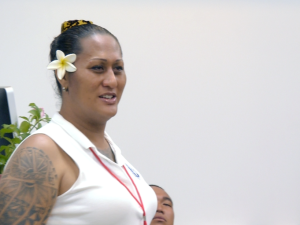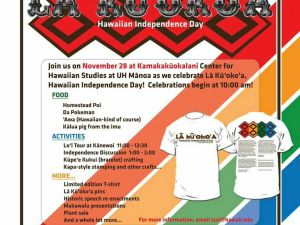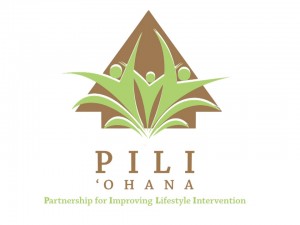November 14, 2011
Kāneʻohe, Hawaiʻi (Papahana Kuaola)
[imagebrowser id=8]
We were lucky to get invited to the set for Mana Maoli’s music video shoot for the song “Little Bit of Love”. The song was written by John Cruz and is performed on the video by John, Jack Johnson, Paula Fuga, Natural Vibrations, Augie Colon, and about 30 students from Hawaiian charter schools. The song and video will be featured on Mana Maoli’s upcoming CD compilations. Even though I heard it like 50 times over and over that day, I kept singing along and enjoying every take. So, in my humble musical opinion, I think this song is going to be a hit!
The students who participated at the video shoot were chosen to represent their respective schools. They sang and danced along with the musicians and got a real taste of what a video production was like. Take after take in the blazing sun, these kids stuck it out and did an awesome job. The feeling on the set was so uplifting because the artists seemed just as happy to be working with the kids as the kids were star struck over the artists. I kind of figured that Jack Johnson was a pretty good guy based on all the things he supports and after interviewing him it all makes sense. He is such a down-to-earth and easy going guy, his personality fits perfectly with his music.
We will be releasing a story about the video, song, and upcoming CD releases prior to the January release date. The artists were so stoked to participate and their interviews with us will undoubtedly make you love them even more than you probably already do.
More information about Mana Maoli from their website:
Founded in 1999, Mana Maoli is a collective of educators, artists, musicians, cultural practitioners, community organizers, and families, who share a common vision of, and action toward, community empowerment through our three primary purposes:
• Community-based education and awareness,
• Pooling and sharing of resources, and
• Sustainability (environmental and economic, at the self and community level)
In the year 2000, Mana Maoli began the process of becoming a formal 501(c)3 non-profit organization. In the years 2000 and 2001, a number of notable achievements occurred: a significant, 3 year federal grant was secured for developing and implementing culture-based curriculum, and our status as both a non-profit and public charter school was approved. The Mana Maoli ‘ohana’s priority and focus from that point on was to plan, start up, and grow this public charter school. Conceptually, Mana Maoli is the people, and Halau Ku Mana the place, of our learning ‘ohana. Mana Maoli also became the official name of the supporting non-profit, and Halau Ku Mana became the name of the public charter school, which opened its doors in August of 2001.
MANA – nvs. Supernatural or divine power, miraculous power; a powerful nation, authorization, privilege; miraculous, divinely powerful, spiritual.
MAOLI – vs. Native, indigenous, genuine, true, real, actual; very, really, truly. Hawaiian native
MANA MAOLI’S PROGRAMS
We provide human, land and financial assets to the following three programs as our way of continually striving toward our vision:
1) Hālau Kū Māna Public Charter School – Community, culture, and kaina (land/ocean)-based education for middle and high school students. With expectations of both academic and cultural rigor, students are more responsive to hands-on, inter-disciplinary learning that has relevance to the host culture, environment, history, and contemporary issues and opportunities.
This is evident through students’ massive turnarounds in attendance, academics, and behavior, while demonstrating a strong sense of cultural grounding and leadership abilities. For example, rather than separate classes for each ‘subject’, held primarily indoors, students spend over 20 hours each week in a year-long project. Whether they are in the Waʻa (sailing canoe), Loko Iʻa (traditional fishpond), or Loʻi (traditional agriculture) projects, they do the related reading, writing, discussion and research to meet language arts standards. They do the types of science and social studies related to the theme of their project (botany and earth science for Loʻi project, chemistry for Loko Iʻa project, physics and astronomy for Waʻa project), and so on. By blending traditional methods of land management with the relevant western sciences we are able to nurture students who are grounded in their culture, yet able to navigate in this ever-changing global society.
Visit HKM’s website: http://www.halaukumana.org
2) Kānehunamoku – Guided by the heavens our ancestors populated every corner of the Pacific. Through keen observations of the environment they were able to glide over the vast ocean with confidence and intent. Today the canoe remains an integral part of our existence, spurring cultural revitalization and reawakening ancient knowledge. Based on the legacy of Pius Mau Piailug, the Kānehūnāmoku program perpetuates the tradition of the canoe to help guide our people towards their destinations, in an out of the canoe, with the same confidence and intent of our ancestors.
Program Components:
- professional development opportunities for business and organizations looking for a unique experience to bring strategic focus and teamwork to the work place.
- ohana-based education.
- One time or ongoing educational experiences for schools.
- sailing and navigational skills training for youth and adults
3) Maoli Music – Innonative and positive music in support of initiatives aligned with Mana Maoli’s vision and purpose. Currently, our Maoli Music program is primarily volunteer-driven, and hundreds of artists – who we refer to as the ‘Mana Maoli Collective’ – have donated their time and talent in support. This ranges from student and underground prodigies to Hawaiiʻs favorite and most respected artists of various genres, such as Aunty Genoa Keawe,John Cruz, Jack Johnson, Paula Fuga, Amy Hanaialiʻi Gilliom, Makaha Sons, Ooklah the Moc, Natural Vibes, Anuhea, Sudden Rush, Kaumakaʻiwa Kanakaʻole, and many more.




